This easy seafood tutorial will show you how to pan-sear salmon for juicy fish with crispy skin. Plus, check out our tips for seasoning, topping and sauces!
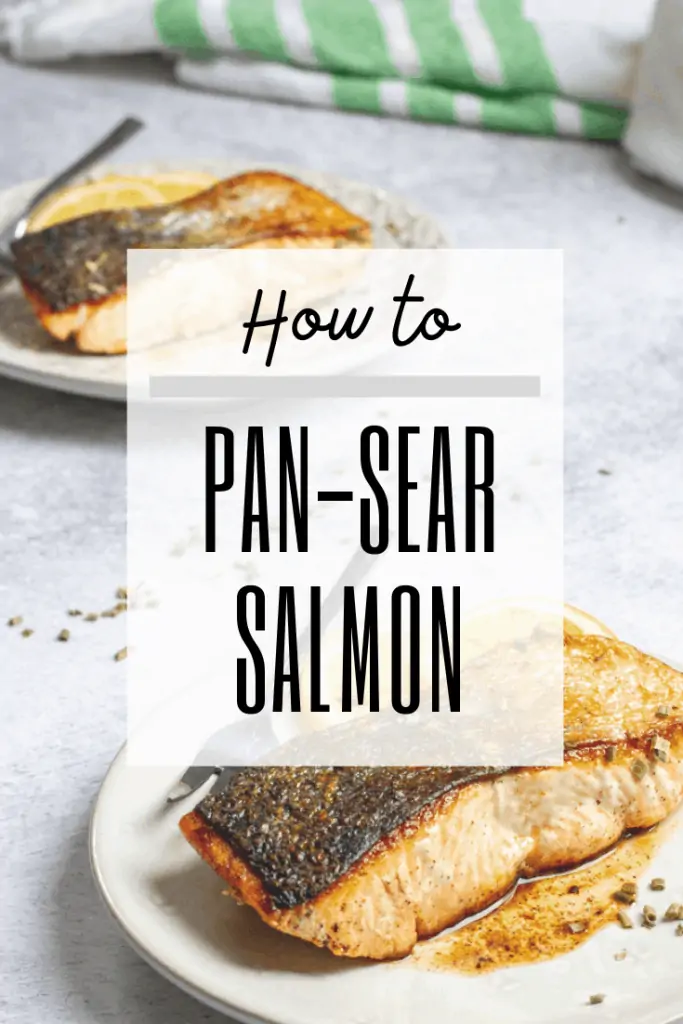
When you hear "pan-seared salmon," do you think of a fancy restaurant?
If you do, that's fair, since pan-searing fish is a popular cooking technique in restaurants.
But guys, I'm here to tell you that you can pan-sear salmon at home!
If it seems intimidating, or if this is your first time pan-searing fish, make sure to read the whole post for all my helpful tips.
Looking for more seafood cooking basics? Learn (even more) ways to cook salmon, learn the difference between smoked salmon and lox and how to grill fish.
How Difficult Is Pan-Searing Fish?
I promise it's not hard, especially if you read through my tips.
That said, if you've never cooked fish before, I recommend starting with even simpler techniques: broiled salmon or air fryer salmon.
Why Pan-Sear Salmon?
Pan-seared salmon is, without a doubt, the best way to get juicy, tender fish with a crispy skin.
What Type of Salmon is Best to Pan-Sear?
Any variety of salmon will work!
Pan-searing is a perfect way to add some richness to less fatty types of salmon (like Pink salmon or Keta salmon). It's also one of my favorite ways to prepare Sockeye salmon and the extra-rich King salmon.
The specialty Copper River salmon is a great candidate for pan-searing.
The salmon in the photos is King salmon.
You can also use Atlantic salmon; just be aware that all commercially sold Atlantic salmon is farmed, not wild.
How to Prepare The Salmon
Start with salmon fillets.
Skin-on fillets are preferable, but skinless will work too. You just won't get a crispy salmon skin!
If you bought a side of salmon and want to sear it, use a fillet knife to cut it into smaller pieces first. A large salmon side will be difficult to flip in the pan.
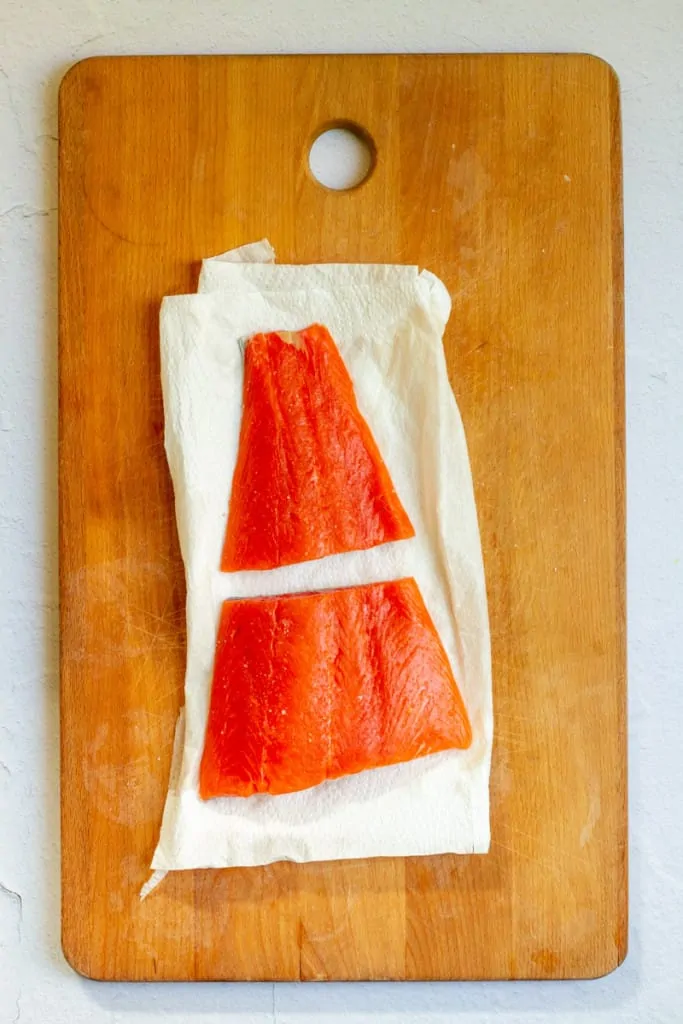
Next, pat the fish dry. Wet fish will not sear well.
Season the salmon with salt (plus any other spices you plan to use) and let it rest at room temperature for about 15 minutes. Cold fish will stick to the pan, so the rest time is important.
What Type of Pan Should I Use?
If possible, use a heavy pan, like cast iron or carbon steel. I use and recommend this Lodge 12" carbon steel skillet.
Lighter pans will work, but it's harder to keep the heat level consistent in a light-weight pan.
How to Pan-Sear Salmon
Start by adding a mixture of oil and butter to a heavy pan.
Melt the butter (but don't let it brown), and then add the salmon skin-side down to the pan. Once you've set it in the pan, don't touch it again until it's time to flip.
Watch the salmon as it cooks. It will turn opaque from the bottom up.
When the fish is halfway cooked through, slide a thin metal spatula under the fish. I use a Wusthof fish spatula, but have also heard great things about this OXO fish spatula.
If the fish doesn't release, wait about 30 seconds and try again. The fish will tell you when it's ready to flip!
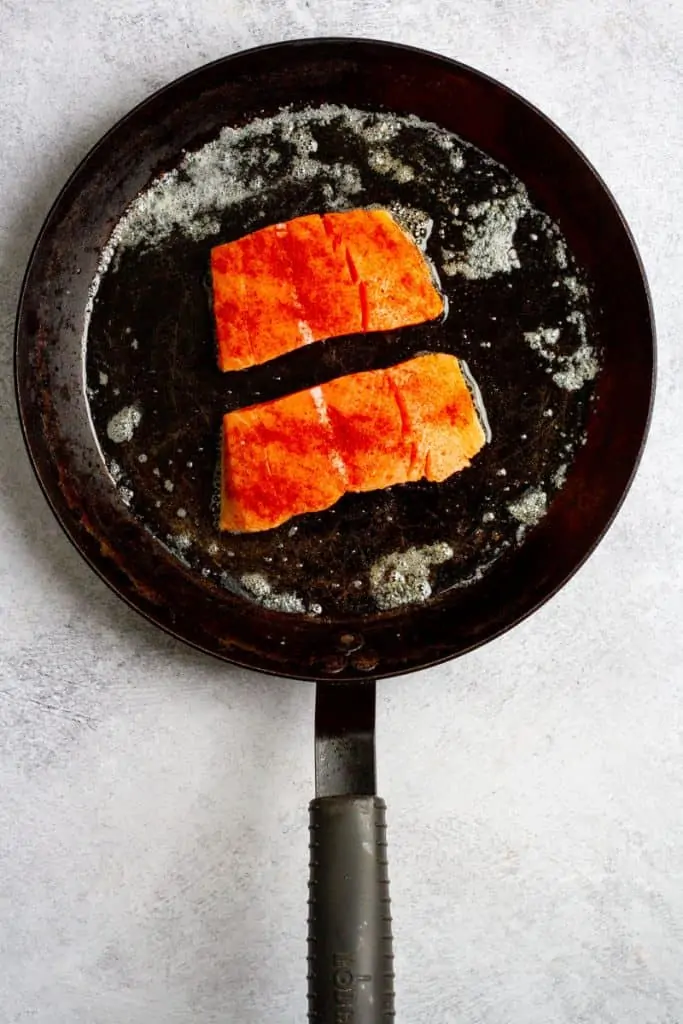
Flip the salmon and allow it to cook until the sides are completely opaque.
There are cook time estimates in the recipe card, but I've found watching the sides of the fish to be the most reliable method!
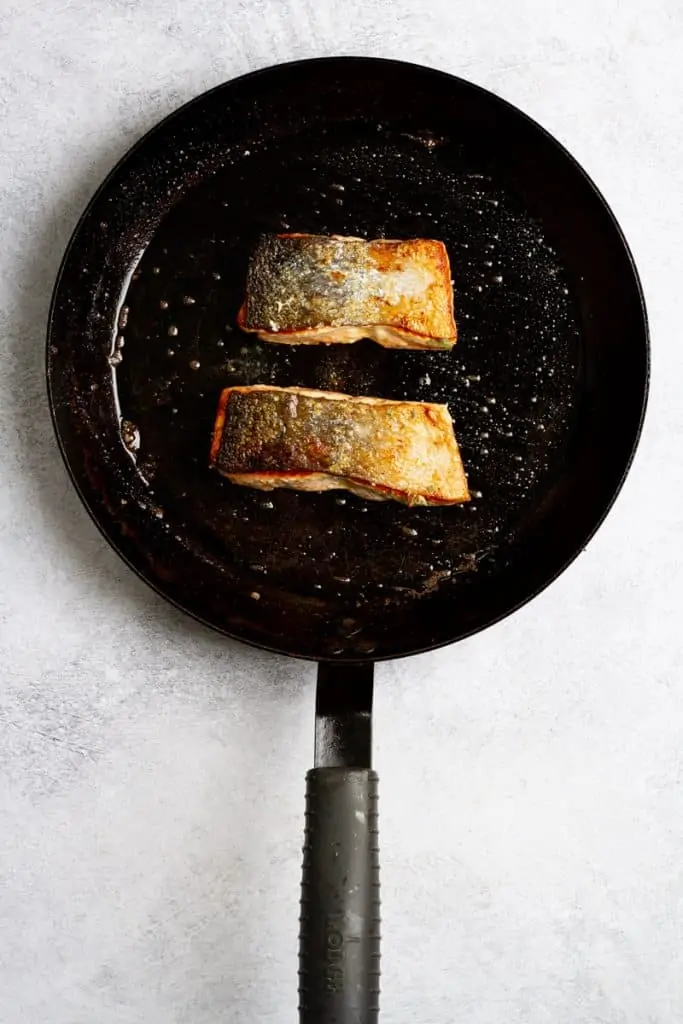
Serving Pan-Seared Salmon with Sauce or Toppings
When the fish is done cooking, remove it from the pan.
For a simple pan sauce, squeeze a lemon into the pan and stir the juice into the butter. Add a few herbs, and serve the sauce with the salmon.
I also enjoy whiskey glazed salmon, pan-seared salmon with a cherry almond sauce, pan-seared salmon with rosemary grapes, and salmon topped with buttery almonds.
Other Ways to Use Pan-Seared Salmon
This salmon is delicious on its own, no doubt about it!
But it's also a fabulous addition to your favorite salad or sandwich. I like to add it to a salmon Caesar salad, a salmon strawberry salad, or to this salmon sandwich with Dijon sauce.
How to Pan-Sear Salmon
Ingredients
- 8 ounces salmon (2 fillets)
- pinch salt, pepper
- 1 tablespoon olive oil
- 1 tablespoon butter or clarified butter Or use extra olive oil
- 1 lemon, juiced
- Handful fresh herbs (parsley, chives, basil, cilantro etc)
Instructions
- Pat salmon dry. Sprinkle fillets on both sides with salt and pepper.Allow fillets to rest at room temperature for about 15 minutes. (Cold salmon is more difficult to sear.)
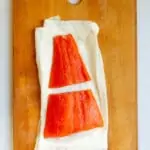
- Add olive oil and butter to a heavy pan. Melt butter over medium heat. Place the fillets skin-side down in the pan and cook 2-4 minutes, depending on the thickness of the fillets. (If your salmon fillets don't have skin, it doesn't matter which side you cook first.)As the salmon cooks, the flesh will begin to turn opaque from the bottom up. When the fish has cooked halfway through, it's ready to flip.Avoid touching the fish until the fish is ready to flip.
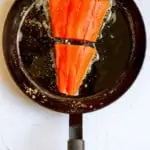
- Use a thin metal spatula to test the fish. If you can slide the spatula under the fish without the fish sticking to the pan, it's ready to flip. If the fillets won't release, give them another 30 seconds. They'll release when they've finished cooking.Cook fish another 2-4 minutes until done. Timing will depend on the thickness of the fillet. (Watch the sides of the fillets to see when the fish is done cooking. It's finished as soon as there are no more translucent patches and it's fully opaque.)

- Transfer the fish to plates, leaving the excess butter in the pan. Cover fish to keep warm, or set fish in a 200ºF oven.Reduce heat to medium-low. Add the lemon juice to the pan, stir with a wooden spoon, and allow the juice to reduce for about a minute. Add half the herbs and turn off the heat. Serve fish hot with pan sauce and remaining herbs.
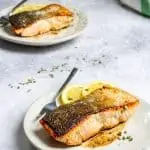
Notes
- Make sure to pat the fish dry. Wet fish won't develop a crispy skin.
- Make sure to let the fish rest at room temperature for about 15 minutes. Cold fish tends to stick to the pan.
- Test the fish with a thin metal spatula before attempting to flip. If the fish doesn't release, give it another 30 seconds and try again.
- If your butter and oil begin to smoke, lower the heat slightly.
- Have all your ingredients prepared before beginning so that you can watch the fish carefully while it cooks. I prep everything while the fish rests at room temperature.
- The skin is edible!
- Salmon may be plated skin-side up or skin-side down.
- To keep the skin crispy longer, especially if holding the fish in a warm oven before serving, store cooked fillets skin-side up to keep the skin from becoming soggy.
- Season the fish lightly with paprika, smoked paprika or garlic powder before cooking.
- Add cherries and amaretto to the pan along with the lemon juice, and serve the salmon with a cherry sauce.
- Top the fish with buttery, toasted almonds.

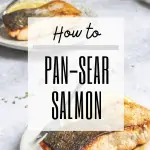
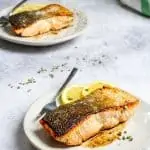
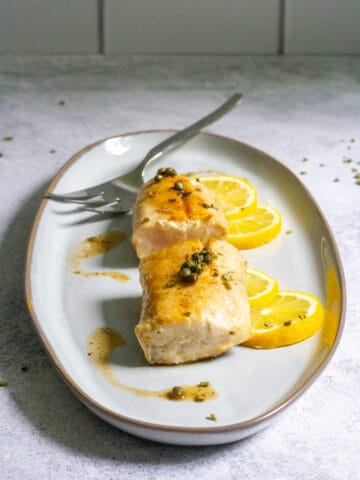
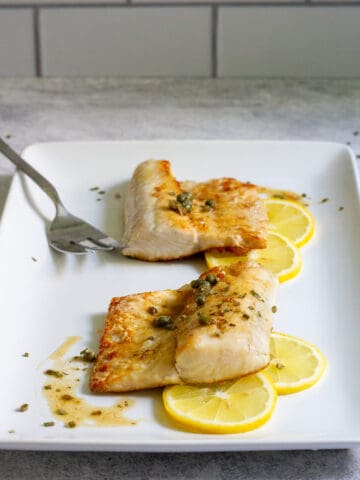
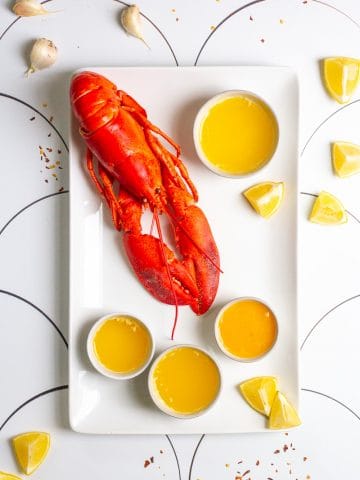
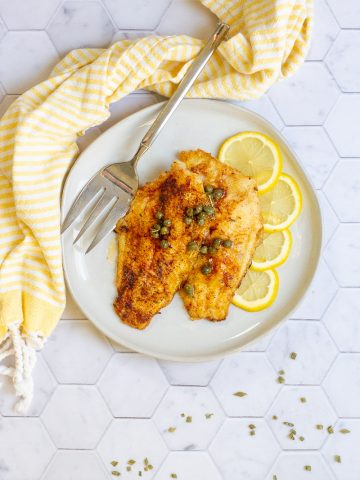
Leave a Comment: